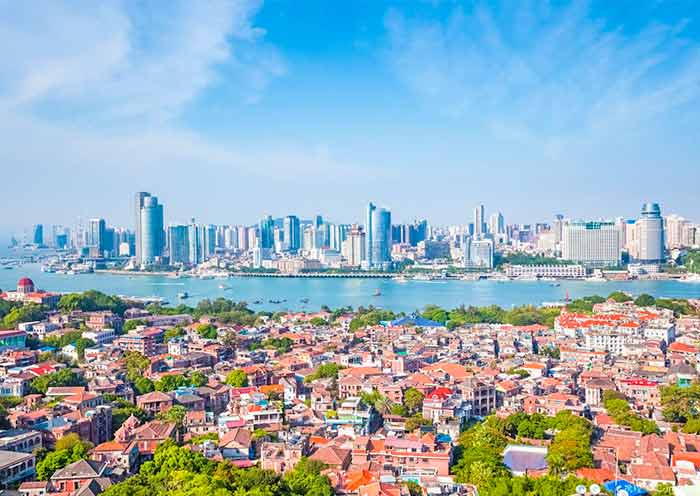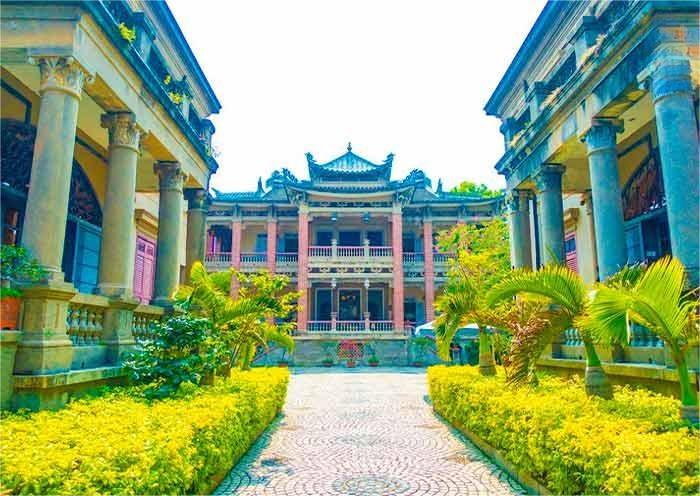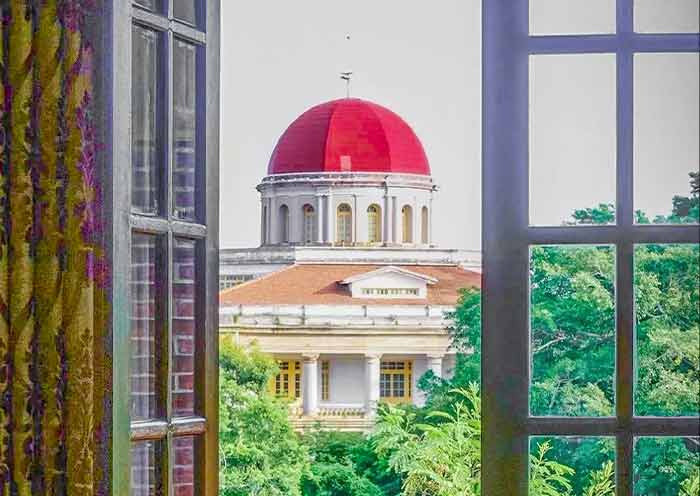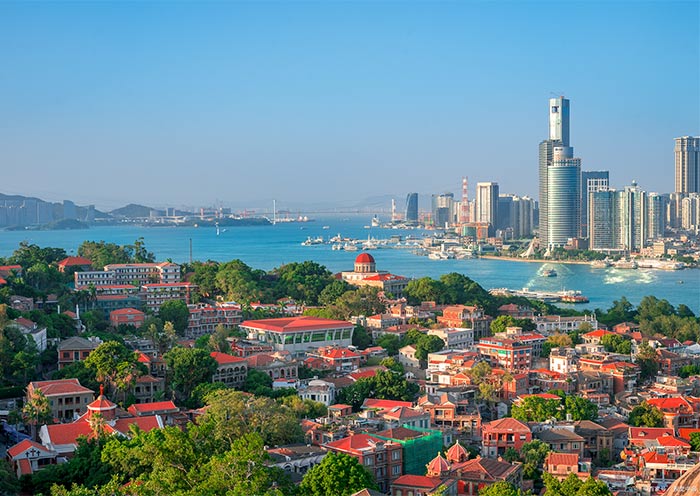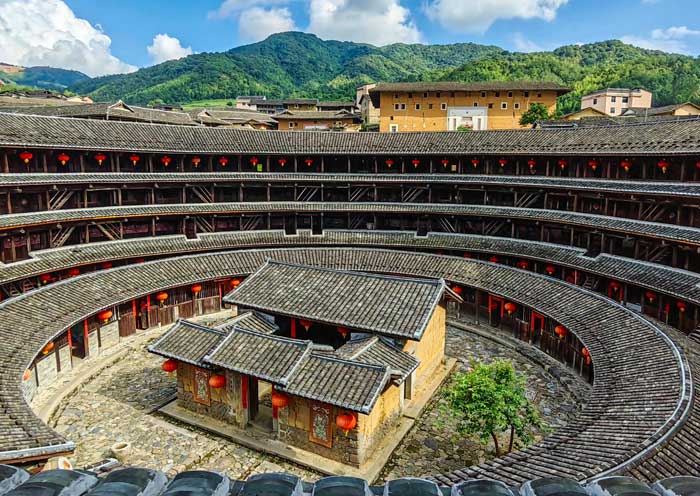Highly recommended for families seeking history and nature. The desert experience at Shapotou was unforgettable, and seeing the massive Western Xia Tombs gave us a real history lesson. The highlight was tasting the excellent wine at Xige Winery—a pleasant surprise in China's west! The tour was well-organized, and the guide and driver were exceptional, ensuring a smooth and enjoyable journey.
- Highlights
- Itinerary
- Price
- Trip Notes
- Accommodation
- Photos
- Reviews
Discover the Best of Xiamen in a Day: History, Culture, Scenic Beauty and Local Delights
Are you eager to explore and understand the quintessence of Xiamen within a span of just one day? Look no further, as our carefully curated Xiamen Day Tour is tailored just for you, promising an immersive and enriching experience.
Dive deep into the essence of Gulangyu, exploring the island by a lesser-known route. Gulangyu is known as an “Exhibition of World Architecture”. Here, Eastern and Western cultures collide, manifesting most distinctly in the diverse array of architectural styles. Challenge your perception and see if you can spot Gothic architecture, symmetrical Chinese designs, or Romanesque architecture. Pay attention to the seamless blend of Eastern and Western elements in certain structures. As you wander through the winding streets, let the architecture transport you back in time, these historical and varied buildings each have countless stories to tell, showcasing the island’s historical role as a melting pot of influences from around the world. Then, dive into the bustling atmosphere of Zhongshan Road, and don’t miss the chance to indulge in local snacks hidden in alleys and a seafood feast at the Eighth Seafood Market. Lastly, surrender to the island vibes of Xiamen with a relaxed drive along Huangdao Road. Feel the gentle caress of the sea breeze and enjoy coconut groves and beach, feast your eyes on the panoramic vistas of the sprawling ocean.
By the end of this comprehensive tour, you will have explored the architectural marvels of Gulangyu, soaked in the laid-back vibes of Huangdao Road, and immersed yourself in the local culture and gastronomy of Xiamen. Join us on this unforgettable journey, and discover the best that Xiamen has to offer in just one day!



Itinerary at a Glance
Xiamen (1 Day)
Gulangyu Island, Zhongshan Road, Eighth Seafood Market, Huandao Road
Itinerary Day by Day
In the morning, you will meet your guide early at the appointed time in your hotel lobby and drive you to port where you'll embark on a 20-minute ferry to Gulangyu Island.
Gulangyu, (Kulangsu in the local dialect), is a beautiful island off the coast of Xiamen. In 2017, Gulangyu was inscribed as a UNESCO World Heritage Site under the nomination "Historic International Settlement." Spanning an area of less than 2 square kilometers, the island boasts over 900 historical buildings of various architectural styles, earning it the nickname "World Architecture Exhibition." Gulangyu is also referred to as the "island of music". It is famous for its outstanding musicians and musical instruments. It has more than 200 pianos - the highest per capita ownership of pianos in the entire country. Furthermore, Gulangyu is lauded as a “Garden on the Sea,” The ban on motorized vehicles contributes to the serene atmosphere of the island, making it a popular destination for those looking to unwind. It boasts beautiful scenery including sandy beaches, lush gardens, and stunning views of the surrounding waters and city skyline.
When visiting Gulangyu Island, you have two distinct routes to choose from. (1) Cultural and Historical Architecture Route: visit the architecture representing various styles and listen to the historical stories behind old buildings. (2) Leisure and Entertainment Route: enjoy a leisurely time on the island, without being bound by fixed routes. Customize your experience based on your preferences and pace.
Optional Route Type: Cultural and Historical Architecture Route
Duration: 4-5 hours
Scenic Spots You will Pass:
Sanqiutian Ferry Terminal → Boat House → Bagua Building (Organ Museum) → Yang Family Mansion → Fànpó Mansion → Trinity Church → Jingua Building ( Huang Cimin Villa ) → Dafu Courtyard Mansion→ Four-courtyard Complex → Chu Family Villa → Huang Family Villa Complex → Shuzhuang Garden (Piano Museum) → Hi Heaven → Huang Rongyuan Mansion ( China Records Museum) → Cathedral Church → Get back to Sanqiutian Ferry Terminal
Brief History Introduction:
Originally, Gulangyu was a common small island in the Southern Fujian region, with architectural forms of its houses not differing from those in other parts of Southern Fujian, such as the red-brick "Four-courtyard Complex" residential buildings. However, after the Opium War in 1840, Xiamen was opened as a port. Foreign merchants, officials, and missionaries began to settle on Gulangyu Island. In less than 2 square kilometers, the island gathered 13 consulates, and a number of mansions, villas, clubs, and chapels associated with trade and commerce, transforming Gulangyu from a secluded fishing village into an international settlement. During this period, colonial-style veranda architecture became the mainstream on the island. This practical and aesthetically pleasing architectural form was also favored by the locals, gradually evolving into a Westernized and modernized architectural style.
In 1902, Gulangyu became a public settlement. With its stable public order and well-established infrastructure, many overseas Chinese gentry and scholars moved to Gulangyu and invested in real estate. Many of these overseas Chinese came from Southeast Asia, and they brought with them the Nanyang (Southeast Asian) style, integrating traditional Chinese architectural elements into European styles. It is because of this that Gulangyu has developed a unique character of Sino-Western fusion, creating a rare "World Architecture Museum."
Detailed Itinerary:Starting from Sanqiutian Ferry Terminal(三丘田码头), you embark on a historical journey through exquisite architecture. Your first stop is the Boat House (船屋) designed by American architect John Lay. This European-style villa stands out with its creative shape, resembling a cruise ship ready to set sail. Moving on, you'll discover the Bagua Building (八卦楼), named for the eight ridges on its red domed roof and its sixteen-sided top window, set on an octagonal platform. This villa combines architectural styles from Palestine, ancient Greece, Italy, and classical China. It stands out as the tallest villa on Gulangyu Island, and its eight-ridged red dome can be easily spotted from the Xiamen ferry, making it a recognizable landmark of Gulangyu. Today, it has been transformed into China’s only organ museum. Next, you'll discover the Yang Family Mansion (杨家园), renowned as the "Versailles of Gulangyu." This complex consists of four distinctive Western-style buildings, each of which is extremely magnificent and was built by overseas Chinese from the Philippines known as the "Philippine Hardware King." They are interconnected by quaint alleys, each boasting its garden, and equipped with the most advanced water supply facilities in Gulangyu at that time. This mansion still preserves numerous rare examples of the fusion of Chinese and Western art design, including Corinthian columns, relief steel decorations, structures made of red bricks, and round and pointed arched door lintels, showcasing unique artistic charm and historical value. Your journey continues to Fan Po Mansion (番婆楼), a symbol of filial piety in the overseas Chinese community. Built out of filial piety by an overseas Chinese from the Philippines. Fan Po herself, adorned in clothes and jewelry sent by her sons, embodies the image of a wealthy woman from Nanyang. Neighbors referred to her as "Fan Po," hence the name "Fan Po Mansion." The architectural style of the mansion is an intriguing mix of Chinese elements and Rococo style, challenging the senses and showcasing an extraordinary kind of beauty. Next on the list is the Trinity Church (三一堂), a church where Chinese and Western architectural styles come together harmoniously. It was built through a collaborative effort by three local churches to provide a place for Chinese worship for the residents of the island.
Then, turn right, which takes you to the Jingua Building(金瓜楼), named after the two golden gourds on its roof, which shimmer in sunlight, the unique shape are characteristic of the Byzantine style, and the golden gourds symbolize prosperity and good fortune in the Chinese culture. The gateway of the building features a traditional Chinese hip-and-gable roof, distinguished by its double eaves and upturned corners, showcasing another exquisite example of the fusion between Chinese and Western architectural styles. Continuing your tour, you’ll visit the largest and best-preserved Southern Fujian red-brick building complex on Gulangyu Island: Four-courtyard Complex (四落大厝). This complex epitomizes the typical layout of traditional Southern Fujian architecture, featuring a front courtyard leading to the main living quarters, all aligned along a central axis. The architectural details include white stone footings paired with red brick and tiles, creating a visually striking and harmonious effect. Adjacent to this is the Dafu Courtyard Mansion (大夫第), one of the earliest and most prominent red-brick residences within the Four-courtyard Complex. The mansion once belonged to Huang Xuzhai, a distinguished fourth-grade official in the imperial court, as evidenced by the "Dafu Di" plaque adorning the residence. You'll then proceed to Chu Family Villa (褚家园), a building that represents a fusion of Minnan (Southern Fujian) and Nanyang (Southeast Asian) architectural styles. Following that, Huang Family Villa Complex (黄家花园) awaits, once celebrated as "the number one villa." This complex comprises three magnificent villas, standing as the most opulent and grandiose among all the residences on Gulangyu Island, built by overseas Chinese from Indonesia, known as the "Indonesian Sugar King." It is a high-class villa showcasing a splendid fusion of European villa elegance, aristocratic opulence, and traditional Chinese characteristics. Over the years, this villa has hosted numerous Chinese and international celebrities and political figures.
The climax of your tour is Shuzhuang Garden (菽庄花园), a garden that has perfectly translated the phrase "facing the sea, with spring flowers blossoming" into reality. The garden backs onto Sunlight Rock and faces the sea, skillfully employing the techniques of "hiding the sea (藏海)" and "compensating the mountain(补山)," becoming a classic example of Chinese garden architecture by the sea. Upon entering the garden, the sound of the waves is near, yet the sea remains out of sight until you cross a screen wall, revealing a sudden expansive view - this is the first "hiding." The true "hiding" lies in the Forty-Four Bridge, beneath which a gate channels seawater into the private garden, creating inner and outer ponds and calming the tumultuous waves. The seaside slopes and rocks are also fully utilized, with terraces built up and pavilions constructed, transforming a narrow bay into a broad, open vista. Turning left past the Forty-Four Bridge and up the hill is the Gulangyu Piano Museum, showcasing nearly a hundred precious antique pianos donated by collector Hu Youyi. Just in time for a piano performance,the resonant piano sounds, harmonizing with the waves outside, encapsulate the unique charm of Piano Island. Then passing through Tianwei Road and taking a right turn onto Zhonghua Road to continue walking, you will arrive at Hi Heaven (海天堂构), the only villa complex on Gulangyu Island that is arranged symmetrically along a central axis. The design masterfully incorporates both Chinese and Western cultural elements, with Chinese-style roofs atop Western-style buildings. Adjacent to the tower is Huang Rongyuan Mansion (黄荣远堂), whose architecture and gardens are extremely aesthetic and characteristic, epitomizing the fusion of Western, Southeast Asian, ancient Chinese, and modern styles. It is renowned as the “most romantic villa” on Gulangyu Island and has served as the filming location for many film and television productions. Nowadays, it has been transformed into the China Record Museum, which houses a collection of precious vinyl records. Wandering back towards the ferry terminal, you’ll pass several consulates and churches, such as the Catholic Church (天主教堂) - , the Union Church (协和教堂) , the Japanese Consulate (日本领事馆), and the British Consulate (英国领事馆), etc. Each of these buildings has a unique architectural style and its own story to tell.
Tips: Wear comfortable shoes as there will be a lot of walking involved.
Optional Route Type: Leisure and Entertainment
Duration: 3-4 hours
If you just want to spend a leisurely vacation on the island, you don't have to stick to a fixed itinerary. Tell the tour guide your preferences, and they will recommend suitable ways and routes for you to explore.
If you don't like crowds, we can take you to quieter alleys. For example, you could take a leisurely stroll along Bishan Road, which is lined with shaded trees and flanked by buildings with a hundred years of history. As you walk, you can listen to the guide share fascinating stories and historical anecdotes about the buildings. There’s no need to rush from one scenic spot to another. Occasionally, unexpected surprises may await you. Or casually enter an old villa and have a cup of coffee, enjoying the peaceful time.
If you are interested in museums, we can recommend a few intriguing ones, such as the Piano Museum, Organ Museum, Gulangyu International Calligraphic Carving Museum, and the Imperial Palace Gulangyu Foreign Cultural Relics Museum, etc. Alternatively, you could attend a piano performance at a concert hall.
If you enjoy scenic spots, we recommend visiting Shuzhuang Garden, Haoyue Park, Sunlight Rock, etc. If you are a food lover, we can recommend some seafood restaurants or guide you to Longtou Road to try authentic Minnan snacks. If you love natural scenery, we can take you to some lesser-known vantage points where you can overlook the panoramic view. Or, you could experience the island like a local, heading to a seaside bathing area to stroll along the beach, feel the sea breeze, and soak up the sun like Meihua Beach, Dadeji Beach, etc.
Notes:
1. Visit Gulangyu, you can either walk or take a shuttle bus (RMB 50 per person)
2. Exploring the outdoor beauty and wandering around Gulangyu is free; however, please note that certain buildings and attractions may have an entrance fee.
After visiting Gulangyu, you will take a ferry back to Xiamen. Then, you can enjoy the feeling of old Xiamen by strolling on Zhongshan Pedestrian Street. Zhongshan Road is the only walking street in China that leads directly to the sea and is also one of the earliest developed commercial areas in Xiamen. Today, the 1.1-kilometer-long Zhongshan Road remains the busiest commercial street in Xiamen. A major highlight of Zhongshan Road is the array of historic Qilou buildings (or arcade-houses) lining the street, constructed by returning overseas Chinese in the 1920s. These Qilou buildings featuring a South-East Asian style, are adorned with delicate Western-style carvings, Chinese engravings are seamlessly integrated with Greek column heads, showcasing a harmonious blend of Eastern and Western architectural elements. While shopping and savoring delicious food, you can also appreciate the unique artistic and historical value of these buildings, experiencing the profound cultural heritage of Xiamen.
Alternatively, you can turn into the small alleys near Zhongshan Road to explore the local life of Xiamen. These alleyways are filled with the ancient charm of the Southern Fujian, offering a plethora of colorful Minnan snacks and authentic old-brand restaurants. I recommend trying the Shacha Noodles (沙茶面) and Oyster Omelette (蚵仔煎). Seafood is also a major highlight of Xiamen's cuisine. You can visit the nearby Eighth Market, which is the most famous seafood market in the locality. There, you can explore a wide variety of fresh seafood and perhaps even try some local seafood dishes. (Tips: If you decide to dine at the Eighth Seafood Market, be sure to negotiate the price before you purchase any seafood to avoid any misunderstandings.)
Lastly, indulge in a tranquil drive along Huandao Road (Islet-Ring Road). Huandao Road is a scenic coastal road in Xiamen, renowned for its beautiful views of the sea, beaches, and lush greenery. Along this road, you can enjoy unparalleled glimpses of the stunning coastline and expansive sea. When passing by various parks and beaches like Yefeng Village and Baicheng Beach, feel free to pull over and take a moment to fully absorb the charm of the island. Take a leisurely stroll along the sandy shores, allowing the soft grains of sand to caress your feet. Immerse yourself in the soothing sea breeze and palm grove, and savor the pleasant seascape that surrounds you. After tour, drive you back to hotel.
Thank you for choosing Asia Odyssey Travel for your Xiamen day tour. We are always dedicated to serving you and look forward to welcoming you again for your future trips to China/Asia.

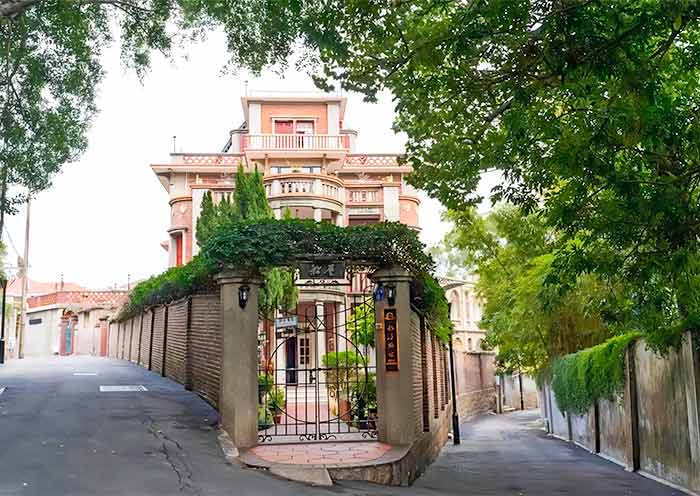


Price: What’s Included & What’s Excluded
What’s Included?
What’s Excluded?
Important Trip Notes for Booking a Private China Tour
Accommodation & Hotel Condition for Your China Tour
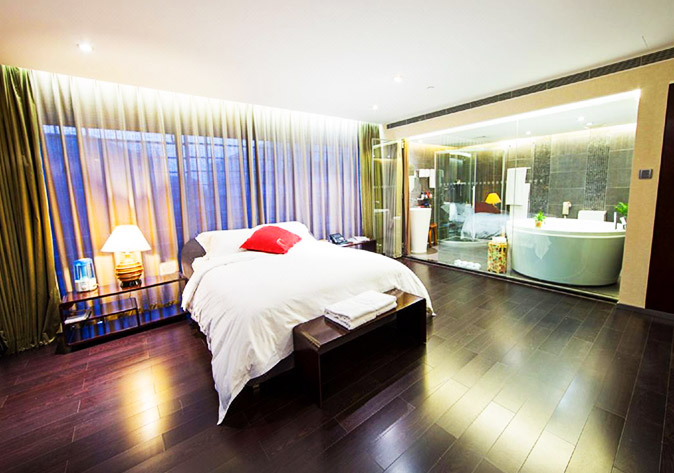



Photo Gallery for This Itinerary
Latest Fujian Tours Reviews from Our Customers

Aisha
Malaysia
Destination(s): Ningxia
Date of Experience: Sep 02, 2025
Tour Customized by: Nicole
You May be Interested in This Tour: 5 Days Classic Ningxia Tour - Shapotou Desert, Yellow River & Lost Kingdoms

Emily Johnson
USA
Expert guides and seamless logistics made our trip truly exceptional. Highly recommended! The Tengger Desert's colorful lakes were a surreal highlight after an unforgettable night camping under Shapotou's starry sky. The history, wine, and off-roading created a perfect, diverse adventure.
Destination(s): Ningxia
Date of Experience: Oct 09, 2025
Tour Customized by: Anthony
You May be Interested in This Tour: 6 Days Ningxia Odyssey Tour: Desert Camping & Off-road to Colorful Lakes

Ryan Tan
Singapore
The perfect mix of history, wine tasting, and desert adventures, especially camping in Shapotou under the stars. Highlights included the stunning Western Xia Tombs and Xige Winery. Truly unique and well-organized—highly recommended!
Destination(s): Ningxia
Date of Experience: Jun 12, 2025
Tour Customized by: Danny
You May be Interested in This Tour: 6 Days Ningxia Wine Tour with Desert Camping in Shapotou
Price: Request
(Based on a private tour for two people. Price varies depending on program, travel date, number of people.)
Free Enquiry! You don’t need to pay for the reservation.
- United States (+1)
- Australia (+61)
- Singapore (+65)
- Malaysia (+60)
- Philippines (+63)
- Canada (+1)
- Italy (+39)
- Indonesia (+62)
- United Kingdom (+44)
- Spain (+34)
- Mexico (+52)
- Hong Kong (+852)
- Thailand (+66)
- United Arab Emirates (+971)
- New Zealand (+64)
- South Africa (+27)
- Germany (+49)
- Brazil (+55)
- India (+91)
- France (+33)
- Vietnam (+84)
- The Netherlands (+31)
- Saudi Arabia (+966)
- Ireland (+353)
- Argentina (+54)
- Switzerland (+41)
- Romania (+40)
- Pakistan (+92)
- Japan (+81)
- Portugal (+351)
- Bangladesh (+880)
- South Korea (+82)
- Puerto Rico (+1)
- Türkiye (+90)
- China (+86)
- Belgium (+32)
- Qatar (+974)
- Greece (+30)
- Taiwan (+886)
- Austria (+43)
- Poland (+48)
- Israel (+972)
- Chile (+56)
- Sri Lanka (+94)
- Nigeria (+234)
- Peru (+51)
- Colombia (+57)
- Hungary (+36)
- Nepal (+977)
- Denmark (+45)
- Bulgaria (+359)
- Norway (+47)
- Slovenia (+383)
- Sweden (+46)
- Kuwait (+965)
- Costa Rica (+506)
- Ecuador (+593)
- Venezuela (+58)
- Malta (+356)
- Croatia (+385)
- Tunisia (+216)
- Czechia (+420)
- Mongolia (+976)
- Bahrain (+973)
- Mauritius (+230)
- Papua New Guinea (+675)
- Cambodia (+855)
- Dominican Republic (+1)
- Luxembourg (+352)
- Finland (+358)
- Guatemala (+502)
- Myanmar (+95)
- Maldives (+960)
- Slovakia (+421)
- Laos (+856)
- Serbia (+381)
- Brunei (+673)
- Oman (+968)
- Macao (+853)
- Panama (+507)
- Morocco (+212)
- Jordan (+962)
- Georgia (+995)
- Fiji (+679)
- Bolivia (+591)
- Lithuania (+370)
- Bahamas (+1)
- Cyprus (+357)
- Latvia (+371)
- Bhutan (+975)
- Iraq (+964)
- Iran (+98)
- Kenya (+254)
- Jamaica (+1)
- Zimbabwe (+263)
- Azerbaijan (+994)
- Uruguay (+598)
- Estonia (+372)
- Andorra (+376)
- Cameroon (+237)
- Ghana (+233)
- Kazakhstan (+7)
- Nicaragua (+505)
- Egypt (+20)
- Russia (+7)
- Albania (+355)
- Réunion (+262)
- Montenegro (+382)
- Algeria (+213)
- Afghanistan (+93)
- Martinique (+596)
- Uganda (+256)
- Honduras (+504)
- North Macedonia (+389)
- Trinidad and Tobago (+1)
- Suriname (+597)
- Antigua and Barbuda (+1)
- Zambia (+260)
- Ukraine (+380)
- Armenia (+374)
- Barbados (+1)
- Belarus (+375)
- Palestine (+970)
- Lesotho (+266)
- Moldova (+373)
- Ethiopia (+251)
- French Polynesia (+689)
- Gambia (+220)
- Guam (+1)
- Gibraltar (+350)
- Isle of Man (+44)
- New Caledonia (+687)
- El Salvador (+503)
- Comoros (+269)
- Seychelles (+248)
- Chad (+235)
- Samoa (+685)
- Cook Islands (+682)
- Palau (+680)
- Paraguay (+595)
- DR Congo (+243)
- Solomon Islands (+677)
